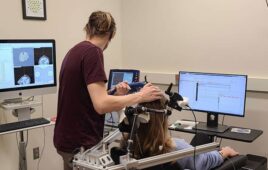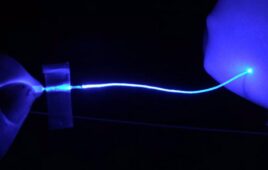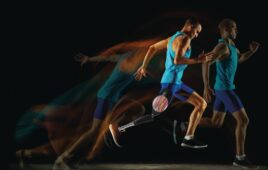Research that could help stroke victims with severe disabilities to regain control over their limbs has been produced by a team at A*STAR. They have shown that stimulating the brain with electric current can help stroke victims use brain-computer interfaces (BCIs) to interact with therapeutic robotic systems.
While repetitive exercises can help some stroke survivors regain control over their motor functions, not all patients are physically capable of executing the required movements. An alternative is ‘motor imagery’, in which patients can try to repair impaired neurological pathways by imagining movements without physically executing them. Studies have shown motor imagery to be an effective neurological rehabilitation technique.
“Patients can imagine the movement of their limbs, but their thoughts cannot be seen by doctors that want to monitor their progress,” explains Kai Keng Ang from the A*STAR Institute for Infocomm Research. “A BCI lets us detect a patient’s thoughts using electroencephalogram(EEG) recordings, and then a feedback system moves the limb using robots. This shows patients if they have imagined the movement correctly.”
The combination of motor imagery and BCI feedback can help the brain rebuild damaged neural pathways, but is not successful with every patient. Ang and co-workers, in collaboration with researchers across Singapore and in Australia, wanted to investigate whether patients could get better at using a BCI if their brain was first subjected to transcranial direct current stimulation (tDCS) — the application of an external electric current to the skull.
The researchers selected 19 stroke patients with impaired arm movements. They randomly assigned 10 patients to receive tDCS for 20 minutes and 9 patients to receive ‘sham-tDCS’ — in which current was only applied for the first 30 seconds to give the sensation of stimulation. The patients then underwent several BCI trials in which they were asked to imagine either moving their arm, or remaining idle.
The trials showed that the group receiving tDCS were significantly more accurate than the sham-tDCS group in generating the required motor imagery signals. The tDCS group also showed a higher indication of Event Related Desynchronisation, a well-established neurophysiological observation that when we move one of our hands or imagine the movement, the amplitude of certain EEG frequencies in the opposite hemisphere of the brain decreases.
The researchers hope that tDCS could soon be combined with existing rehabilitation techniques, and help more patients access the benefits of BCI therapy. “We are working on algorithms to improve the detection of motor imagery from EEGs, and conducting research on using tDCS with BCI for lower limb rehabilitation, such as walking,” says Ang.




